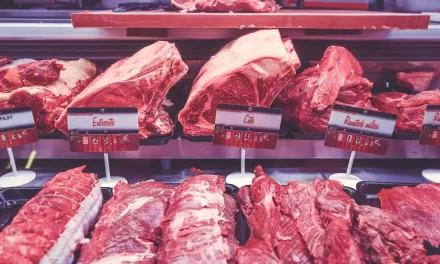A recent study from Harvard T.H. Chan School of Public Health has established a significant link between heme iron, found in red meat and other animal products, and an elevated risk of developing type 2 diabetes (T2D). The research, published in Nature Metabolism, offers a more nuanced understanding of how heme iron influences diabetes risk compared to previous studies.
Lead author Fenglei Wang, a research associate in the Department of Nutrition, highlighted the study’s comprehensive approach: “Compared to prior studies that relied solely on epidemiological data, we integrated multiple layers of information, including epidemiological data, conventional metabolic biomarkers, and cutting-edge metabolomics. This allowed us to achieve a more comprehensive understanding of the association between iron intake and T2D risk, as well as potential metabolic pathways underlying this association.”
The study analyzed 36 years of dietary data from 206,615 adults participating in the Nurses’ Health Studies I and II and the Health Professionals Follow-up Study. Researchers assessed various forms of iron intake—total, heme, non-heme, dietary (from foods), and supplemental (from supplements)—and their association with T2D, while accounting for other health and lifestyle factors.
The findings reveal a notable association between high heme iron intake and increased T2D risk. Participants with the highest intake levels had a 26% higher risk of developing T2D compared to those with the lowest intake levels. Notably, heme iron was responsible for over half of the T2D risk linked to unprocessed red meat and contributed to the risk associated with several T2D-related dietary patterns. In contrast, intakes of non-heme iron, found in plant-based foods, were not significantly associated with T2D risk.
The study also explored biological mechanisms behind this link by examining plasma metabolic biomarkers and metabolomic profiles. Higher heme iron intake was associated with adverse blood biomarkers, such as elevated C-peptide, triglycerides, C-reactive protein, leptin, and markers of iron overload, alongside lower levels of beneficial biomarkers like HDL cholesterol and adiponectin. Additionally, the researchers identified a dozen blood metabolites—including L-valine, L-lysine, uric acid, and various lipid metabolites—that may mediate the relationship between heme iron and T2D risk.
The implications of this research extend to dietary guidelines and public health strategies aimed at reducing diabetes rates. The study raises concerns about the health effects of adding heme to plant-based meat alternatives—a growing trend in the food industry. Frank Hu, the corresponding author and Fredrick J. Stare Professor of Nutrition and Epidemiology, emphasized the importance of dietary choices in diabetes prevention: “Reducing heme iron intake, particularly from red meat, and adopting a more plant-based diet can be effective strategies in lowering diabetes risk.”
However, the study’s authors noted several limitations, including the potential for incomplete accounting of confounders and measurement errors in the epidemiological data. Additionally, as the study population was predominantly white, further research is needed to replicate these findings across diverse racial and ethnic groups.
For more details, refer to the study in Nature Metabolism (DOI: 10.1038/s42255-024-01109-5).












